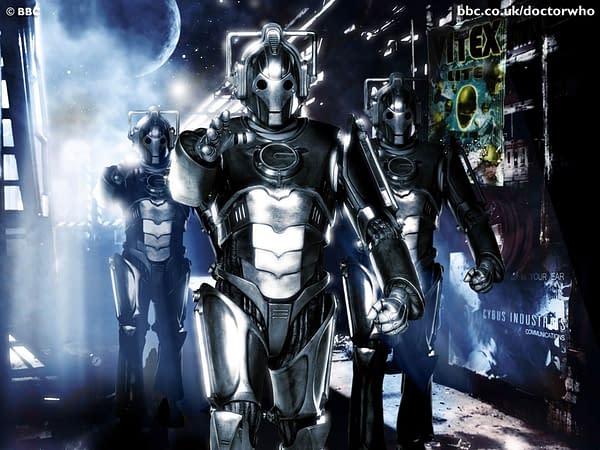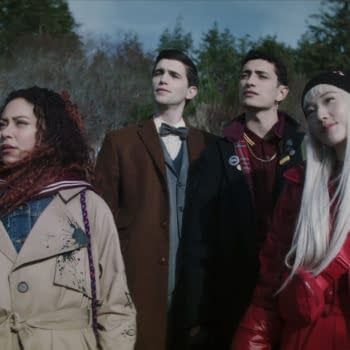Posted in: BBC, Doctor Who, Opinion, TV, TV | Tagged: bbc, chris chibnall, cybermen, david tennant, doctor who, peter capaldi, russell t davies, steven moffat, william hartnell
Doctor Who: How The Cybermen Evolved from Two-Dimensional to Deadly
A look at the Cybermen & their evolving role in Doctor Who - with some of our long-running jokes about the robotic baddies for good measure.
Ahh, the Cybermen, the other Big Bads of Doctor Who, the complement to the Daleks' monster army. Where the Daleks are genocidal Nazi analogies, the Cybermen are stand-ins for Communists. Instead of committing genocide on everyone who's not like them, they're intent on turning everyone not like them into them. No more emotions or individualism. The Sonatarans wage war for its own sake. They all stood for everything the Doctor fought against.

The Cybermen have changed their design more often than the other Doctor Who baddies, if only because bigger budgets came into play and the BBC designers got to update their looks. Peter Capaldi, as an OG fan of the show, requested that the Cybermen the Twelfth Doctor fought in his final story be modeled on the original Mondasian Cybermen, who were introduced back in the 1960s in the First Doctor's (William Hartnell) final adventure "The Tenth Planet." Back then, the costumes were just white cloth masks and body suits with gloves and metal doo-dads attached. They had a voice like the snootiest waiter at the most pretentious restaurant you'll ever be unlucky enough to go to. Steven Moffat did manage to remind us that they could be really creepy, so that's a plus for storytelling, especially in Doctor Who.
The series in the 1970s and 1980s tended to depict the Cybermen as two-dimensional villains, but that was the style of genre TV writing in those days. It helped that the Cybermen had no personality since British screenwriting in those days tended to treat personality as optional in genre shows. They were just meanies and sometimes were meaner than having no personalities entailed. They were written as dastardly and sadistic rather than soulless. That was the Seventies for ya. It took Russell T. Davies' reboot in 2006 to restore them to callous, implacable automatons – and they were scarier for that. Their utter indifference to suffering and pleas was what made them truly menacing rather than making them mean. Steven Moffat made them almost comic foils sometimes without altering them, and then Chris Chibnall made their detachable heads even deadlier by having them fly as squads, on top of introducing Ashad, the Lone Cyberman who's broken and returns with his personality, which was already evil before he became a Cyberman. He was more than a meanie; he had pathos. And in the end, robot characters sell toys. Doctor Who was always about selling scary monsters to children.













